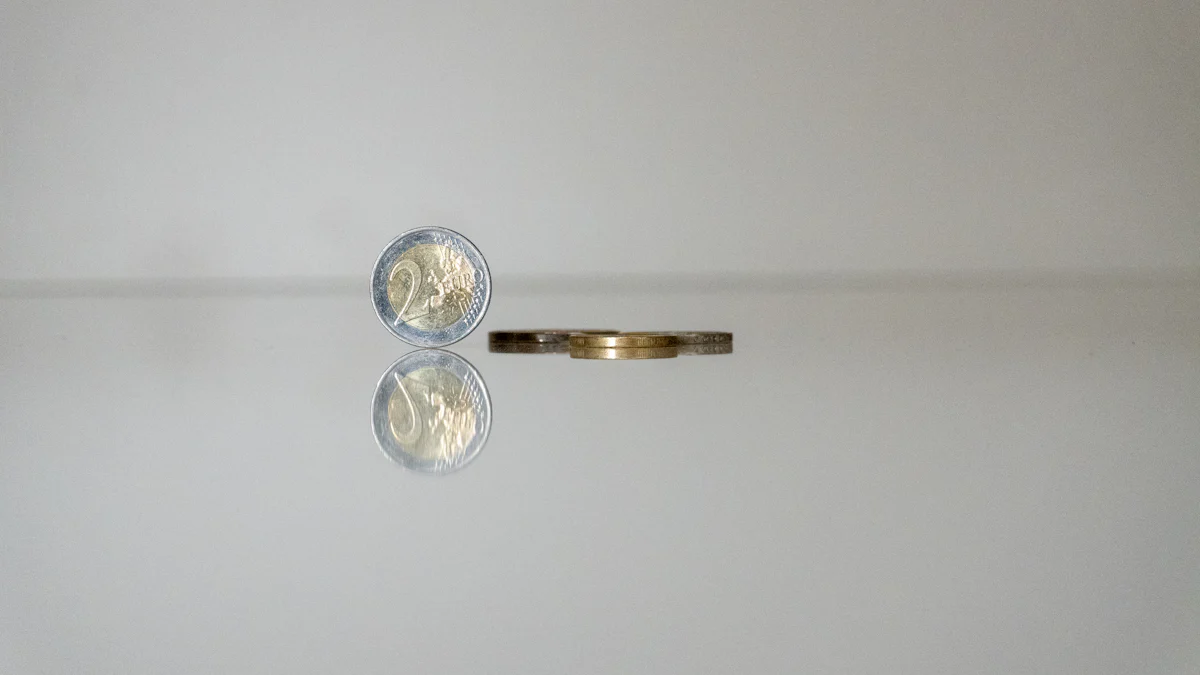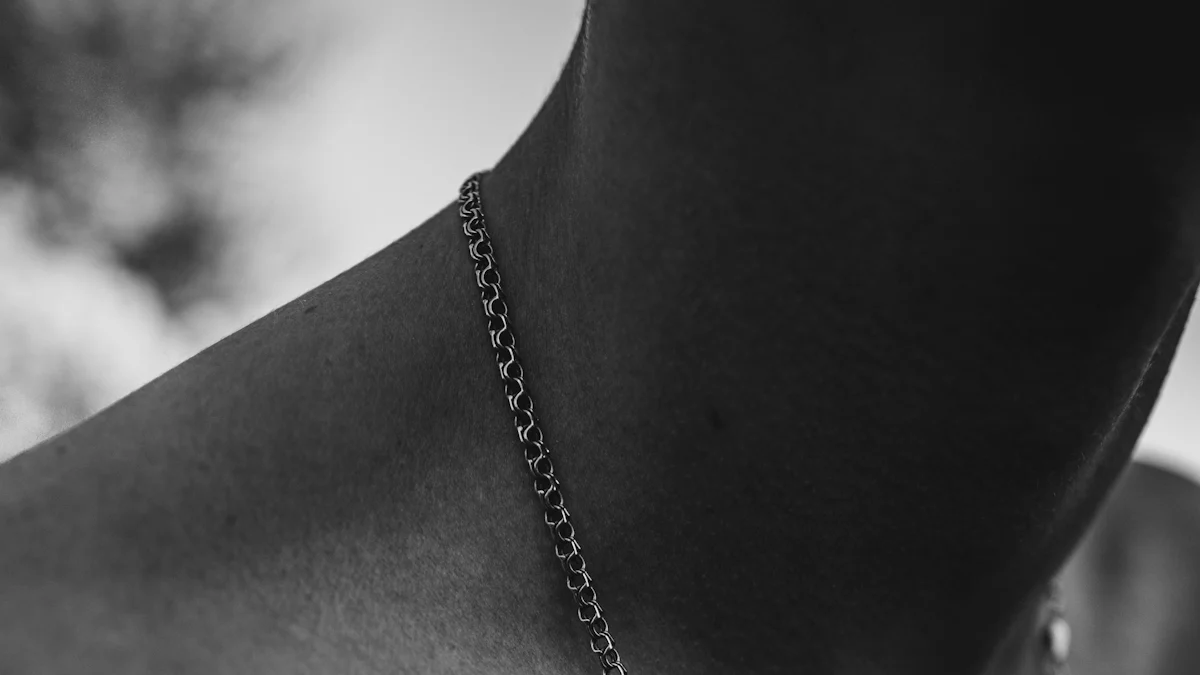What Does CTTW Mean in Jewelry?

When you see the term CTTW on a jewelry label, it refers to the Carat Total Weight, which is the cttw meaning that represents the combined weight of all diamonds or gemstones in a piece. This measurement plays a crucial role in helping you understand the value and visual appeal of jewelry. For multi-stone designs, CTTW gives you insight into the quantity and size of the stones. By knowing this, you can confidently compare options and select a piece that matches your style and budget.
Key Takeaways
- CTTW stands for Carat Total Weight, indicating the combined weight of all gemstones in a piece of jewelry, which helps assess its value and visual appeal.
- Understanding carat weight is crucial as it influences both the size and price of gemstones; larger stones typically command higher prices due to their rarity.
- When evaluating multi-stone jewelry, CTTW provides insight into the overall composition, helping you visualize the design and proportions of the piece. Always consider the quality of gemstones (cut, color, clarity) alongside CTTW to ensure you are making a well-informed purchase.
- Compare jewelry pieces by examining their CTTW and the arrangement of stones, as two pieces with the same total weight can look very different. Set a budget before shopping to focus on pieces that offer the best combination of weight, quality, and design within your price range.
- Consult a jeweler for expert advice if you're unsure about CTTW or gemstone quality, ensuring you make confident and informed decisions.
Understanding Carat Weight

What Is a Carat?
A carat is the standard unit used to measure the weight of diamonds and other gemstones. It equals exactly 0.2 grams, or one-fifth of a gram. This precise measurement ensures consistency across the jewelry industry, allowing you to compare gemstones with confidence.
The term "carat" originates from the carob seed, which ancient traders used as a reference for weighing gemstones due to its uniform size. Today, modern technology has replaced carob seeds, but the carat remains a universal standard. Each carat is further divided into 100 points, making it possible to describe smaller stones with accuracy. For example, a diamond weighing 0.25 carats may also be referred to as 25 points.
Understanding what a carat represents helps you evaluate the size and weight of individual gemstones. This knowledge is essential when selecting jewelry, as carat weight often influences both the appearance and value of a piece.
Why Carat Weight Matters in Jewelry
Carat weight plays a significant role in determining the value and appeal of jewelry. Larger gemstones typically command higher prices due to their rarity. However, carat weight is not the sole factor that affects a gemstone's worth.
When you shop for jewelry, carat weight provides a clear indication of a gemstone's size.
In multi-stone jewelry, carat weight becomes even more critical. The total carat weight (CTTW) reflects the combined weight of all the gemstones in a piece. For example, a ring labeled as 1 CTTW may feature several smaller diamonds that together weigh one carat. This measurement helps you understand the overall composition of the jewelry, ensuring you make an informed decision.
By paying attention to carat weight, you can better assess the value, size, and visual impact of the jewelry you choose. This understanding empowers you to select pieces that align with your preferences and budget.
CTTW Meaning and Its Role in Jewelry
What Is CTTW (Carat Total Weight)?
CTTW stands for Carat Total Weight, a term used to describe the combined weight of all diamonds or gemstones in a piece of jewelry. This measurement provides a clear understanding of the total gemstone content in items like rings, necklaces, bracelets, and earrings. For example, if you see a pair of diamond solitaire earrings labeled with a CTTW of 1 carat, it means the total weight of the diamonds in both earrings equals 1 carat.
CTTW meaning becomes especially important when evaluating multi-stone jewelry. A diamond necklace with a pendant featuring a center diamond weighing 0.75 carats and smaller accent diamonds weighing 0.25 carats each might have a total weight of 1.5 carats. This value helps you assess the overall size and presence of the gemstones in the piece.
Understanding CTTW allows you to make informed decisions when comparing jewelry. It ensures you know whether the total weight comes from one large gemstone or multiple smaller ones, which can affect the appearance and value of the item.
How Is CTTW Calculated?
Calculating CTTW involves adding the weights of all the gemstones in a piece of jewelry. Each stone's weight is measured in carats, and the sum gives the total carat weight. For instance, a diamond tennis bracelet with 15 diamonds, each weighing 0.2 carats, would have a CTTW of 3 carats (15 x 0.2 = 3).
In some cases, jewelry combines a central gemstone with smaller accent stones. A diamond ring might feature a 1-carat center stone surrounded by smaller diamonds that collectively weigh another 1 carat. The total CTTW for this ring would be 2 carats. This calculation ensures transparency, helping you understand the composition of the jewelry.
When shopping, always check the CTTW to determine how the weight is distributed. A single large diamond often appears more prominent than multiple smaller stones of the same total weight. Knowing how CTTW is calculated helps you evaluate whether a piece meets your expectations for size and design.
Why CTTW Is Important in Multi-Stone Jewelry
CTTW plays a crucial role in multi-stone jewelry by giving you a complete picture of the gemstone arrangement. It helps you understand the balance between the number of stones and their individual sizes. For example, an engagement ring with a CTTW of 1.5 carats might feature a large center diamond weighing 1 carat, with smaller stones contributing the remaining 0.5 carats. This information helps you visualize the design and proportions of the piece.
Multi-stone jewelry often uses CTTW to highlight the overall brilliance and sparkle. A diamond tennis bracelet with a CTTW of 3 carats might consist of many small diamonds, creating a continuous shimmer. Similarly, a diamond necklace with a CTTW of 2 carats could include a combination of a central gemstone and accent stones, offering a balanced and elegant look.
By understanding CTTW, you can better assess the value and aesthetic appeal of multi-stone jewelry. It ensures you know what you're paying for and helps you choose pieces that align with your preferences and budget.
CTTW vs. CTW vs. CT: Understanding the Differences

What Do These Terms Mean?
When shopping for jewelry, you may encounter terms like CTTW, CTW, and CT. Each term refers to carat weight, but they serve different purposes in describing gemstones.
-
CTTW (Carat Total Weight): This represents the combined weight of all diamonds or gemstones in a piece of jewelry. For example, a ring with multiple diamonds totaling 2 carats would have a CTTW of 2 carats. It gives you an overall idea of the gemstone content in multi-stone designs.
-
CTW (Carat Total Weight): This term is often used interchangeably with CTTW. Both indicate the total weight of all gemstones in a jewelry piece. However, some jewelers may prefer one term over the other based on regional or industry practices.
-
CT (Carat): This refers to the weight of a single gemstone, typically a loose diamond or a central stone in a piece of jewelry. For instance, a solitaire diamond weighing 1 carat would be labeled as 1 CT.
Understanding these terms helps you differentiate between the weight of individual stones and the total weight of all stones in a jewelry piece.
Why Knowing the Difference Matters
Knowing the difference between CTTW, CTW, and CT ensures you make informed decisions when purchasing jewelry. Each term provides unique information about the gemstones, which can affect the appearance, value, and design of the piece.
-
Evaluating Multi-Stone Jewelry: CTTW or CTW helps you understand the total gemstone weight in a piece. For example, a bracelet with a CTTW of 3 carats might feature many small diamonds, creating a sparkling effect. Without this information, you might overlook the overall brilliance of the design.
-
Assessing Individual Gemstones: CT focuses on the weight of a single gemstone. If you are buying a solitaire ring, knowing the CT helps you evaluate the size and value of the central stone. This clarity ensures you get what you expect.
-
Comparing Jewelry Pieces: Two pieces with the same CTTW might look different due to the size and arrangement of the stones. A necklace with one large diamond weighing 2 carats will appear different from one with several smaller diamonds totaling 2 carats. Understanding these differences allows you to choose a design that matches your preferences.
By recognizing how these terms apply to jewelry, you can better assess the value and aesthetics of each piece. This knowledge empowers you to select jewelry that aligns with your style and budget.
How CTTW Affects Jewelry Pricing and Buying Decisions
The Relationship Between CTTW and Price
CTTW directly impacts the price of jewelry. The total carat weight reflects the combined size of all gemstones in a piece, which often determines its overall value. Larger CTTW values typically result in higher prices because they indicate more gemstone content. However, the price is not solely based on the CTTW. The quality of each gemstone, including its cut, color, and clarity, also plays a significant role.
For example, two rings with the same CTTW may have vastly different prices. One ring might feature a single high-quality diamond, while the other includes multiple smaller stones of lower quality. The first ring would likely cost more due to the superior characteristics of its gemstone. This highlights the importance of considering both the CTTW and the individual quality of the stones when evaluating jewelry.
Understanding the relationship between CTTW and price helps you navigate the market with confidence. It allows you to assess whether a piece offers good value for its cost. By focusing on both the total weight and the inherent quality of the gemstones, you can make informed decisions that align with your budget and preferences.
Tips for Buyers Considering CTTW
When shopping for jewelry, paying attention to the CTTW meaning and its implications can guide you toward the right choice. Here are some practical tips to consider:
-
Examine the Distribution of Weight
Look beyond the total carat weight. Determine whether the CTTW comes from one large gemstone or multiple smaller ones. A single large diamond often has a more striking visual impact than several smaller stones of the same total weight. -
Evaluate Gemstone Quality
Assess the cut, color, and clarity of the gemstones. High-quality stones enhance the beauty and value of the jewelry, even if the CTTW is modest. Avoid focusing solely on the weight without considering these critical factors. -
Compare Similar Pieces
When comparing jewelry, check the CTTW alongside the design and arrangement of the stones. Two pieces with identical CTTW values may look entirely different due to the size and placement of the gemstones. Choose the one that best matches your style. -
Set a Budget
Decide on a budget before shopping. Knowing your spending limit helps you narrow down options and focus on pieces that offer the best combination of weight, quality, and design within your price range. -
Seek Professional Guidance
Consult a jeweler or expert if you're unsure about the CTTW or the quality of the gemstones. Their insights can help you understand the value of a piece and ensure you make a well-informed purchase.
By following these tips, you can select jewelry that balances personal style, quality, and value. Understanding the CTTW meaning and its role in pricing empowers you to make confident decisions and find pieces that meet your expectations.
CTTW represents the total weight of all gemstones in a jewelry piece. This measurement plays a vital role in evaluating the overall value and visual appeal of your chosen item. By understanding CTTW, you gain clarity on the gemstone arrangement and can compare options effectively. However, it’s equally important to consider other factors like gemstone quality and design to ensure your purchase meets your expectations. When buying jewelry, always assess the CTTW alongside these elements. This knowledge empowers you to make informed decisions and select pieces that align with your style and budget.
FAQ
What does CTTW stand for?
CTTW stands for Carat Total Weight. It represents the combined weight of all diamonds or gemstones in a piece of jewelry. This term helps you understand the total gemstone content in items like rings, necklaces, and bracelets.
Why is understanding CTTW important?
Understanding CTTW is essential when purchasing jewelry. It gives you insight into the total weight of all gemstones in a piece, helping you evaluate its value and appearance. This knowledge ensures you make informed decisions and choose jewelry that meets your expectations.
How does CTTW differ from other weight measurements of diamonds?
CTTW refers to the total weight of all diamonds or gemstones in a jewelry piece. In contrast, CT (Carat) measures the weight of a single gemstone, such as a loose diamond or a central stone in a ring. Knowing this distinction helps you compare jewelry more effectively.
Does a higher CTTW always mean better quality?
Not necessarily. A higher CTTW indicates more gemstone weight, but it doesn’t guarantee better quality. Factors like cut, color, and clarity significantly impact the overall quality and value of the gemstones.
Can two pieces of jewelry with the same CTTW look different?
Yes, they can. Two pieces with identical CTTW values might differ in appearance due to the size, shape, and arrangement of the gemstones. For example, one piece may feature a single large diamond, while another includes multiple smaller stones. These differences affect the design and visual impact.
How is CTTW calculated?
CTTW is calculated by adding the carat weights of all gemstones in a jewelry piece. For instance, if a bracelet contains 10 diamonds, each weighing 0.1 carats, the total CTTW would be 1 carat (10 x 0.1 = 1). This calculation provides a clear picture of the gemstone composition.
What role does CTTW play in pricing jewelry?
CTTW significantly influences jewelry pricing. Larger total carat weights often result in higher prices due to the increased gemstone content. However, the quality of the gemstones also plays a crucial role. Two pieces with the same CTTW can have different prices based on the cut, color, and clarity of the stones.
Is CTTW the same as CTW?
Yes, CTTW and CTW both stand for Carat Total Weight and are used interchangeably in the jewelry industry. Both terms describe the combined weight of all gemstones in a piece. Some jewelers may prefer one term over the other, but their meaning remains the same.
How can I use CTTW to choose the right jewelry?
You can use CTTW to assess the total gemstone weight and compare different pieces. Look at how the weight is distributed—whether it comes from one large stone or multiple smaller ones. Combine this information with an evaluation of gemstone quality and design to find a piece that suits your style and budget.
Does CTTW apply only to diamonds?
No, CTTW applies to all gemstones, not just diamonds. Whether a piece features sapphires, rubies, or emeralds, the CTTW reflects the total weight of all stones in the jewelry. This makes it a versatile measurement for evaluating various types of gemstone jewelry.
See Also
Comparing Tungsten Diamond Rings And Traditional Options
Reviewing 10 Carat Lab Grown Tennis Bracelets
A Review Of 5 Carat Lab Grown Tennis Bracelet

